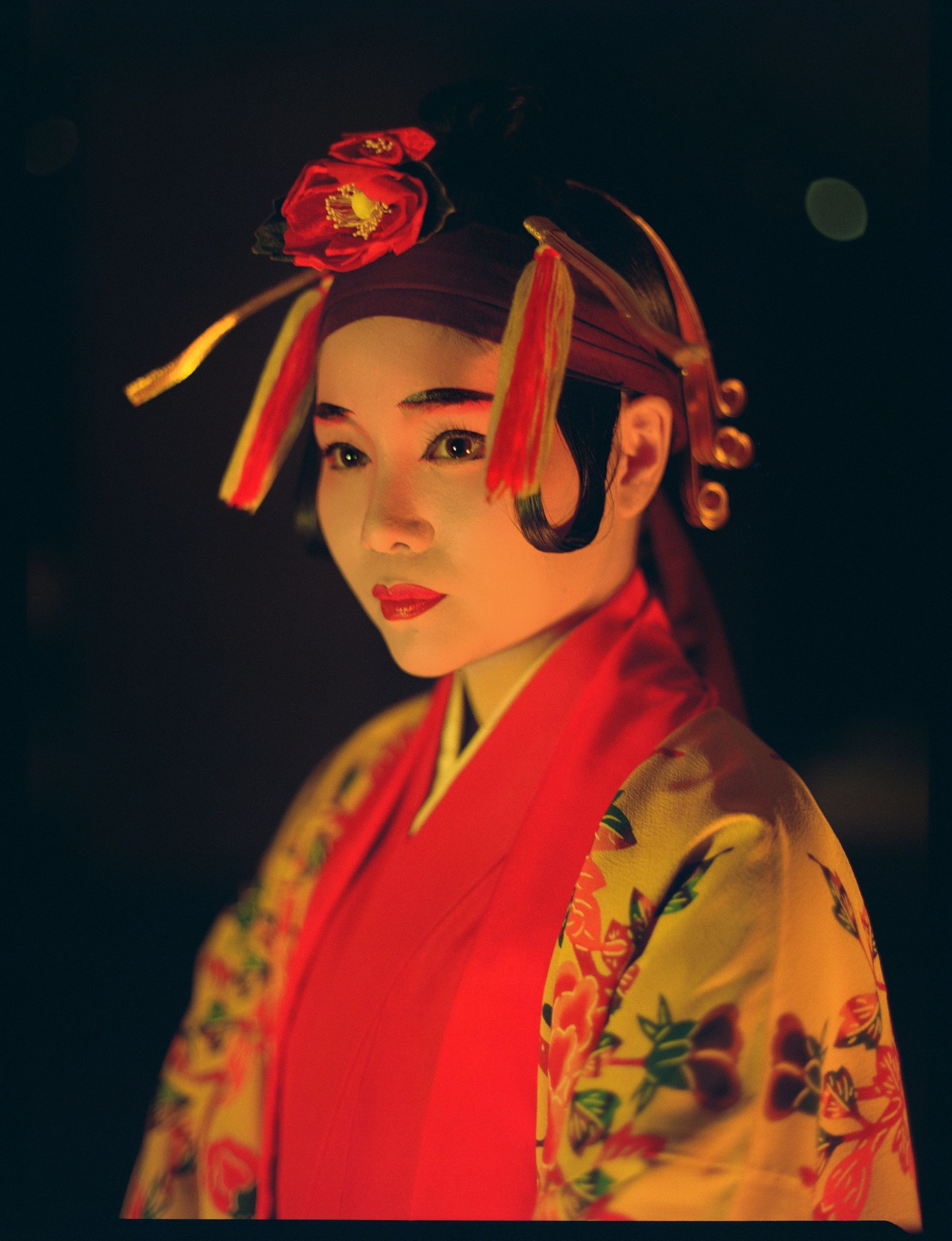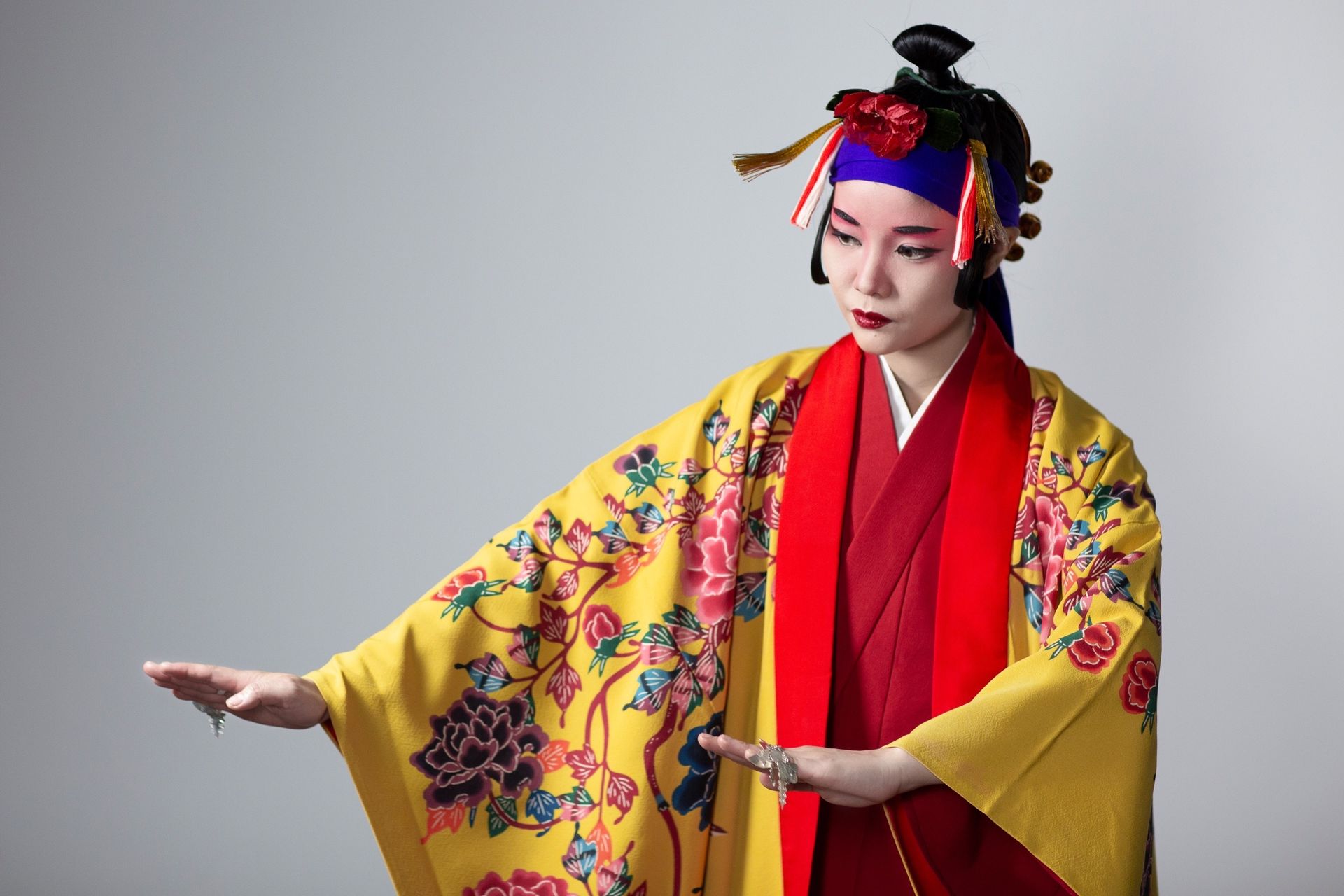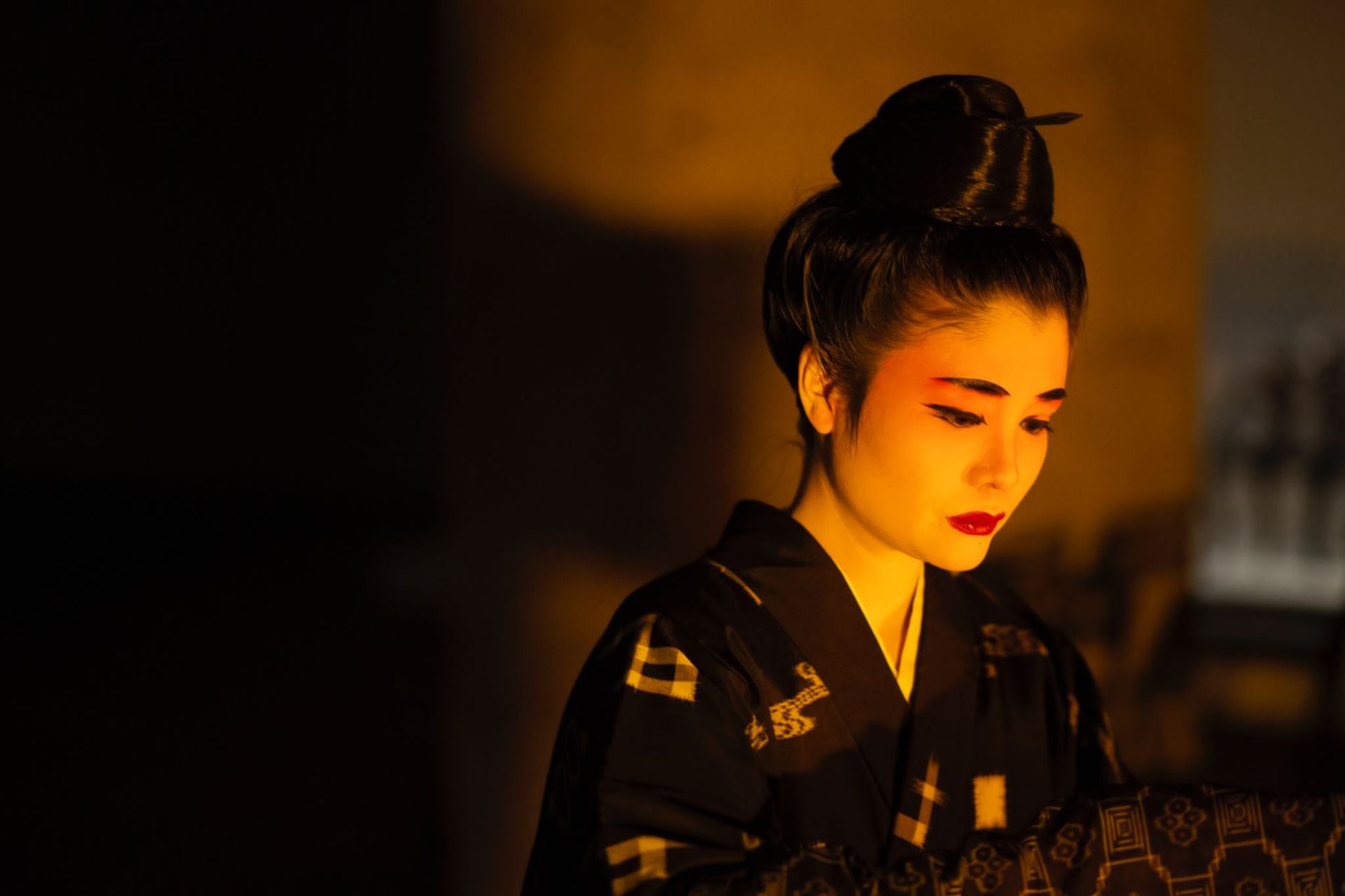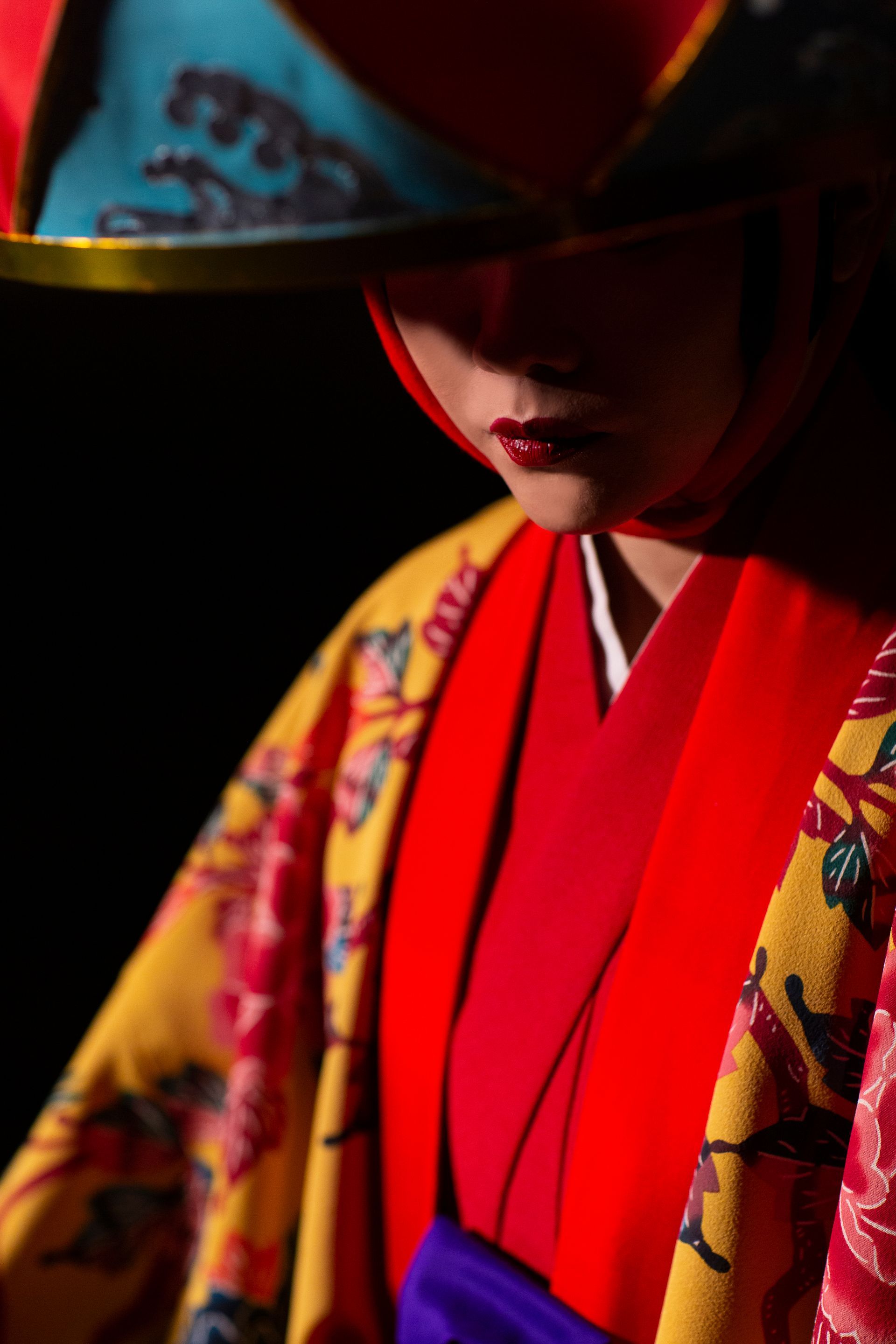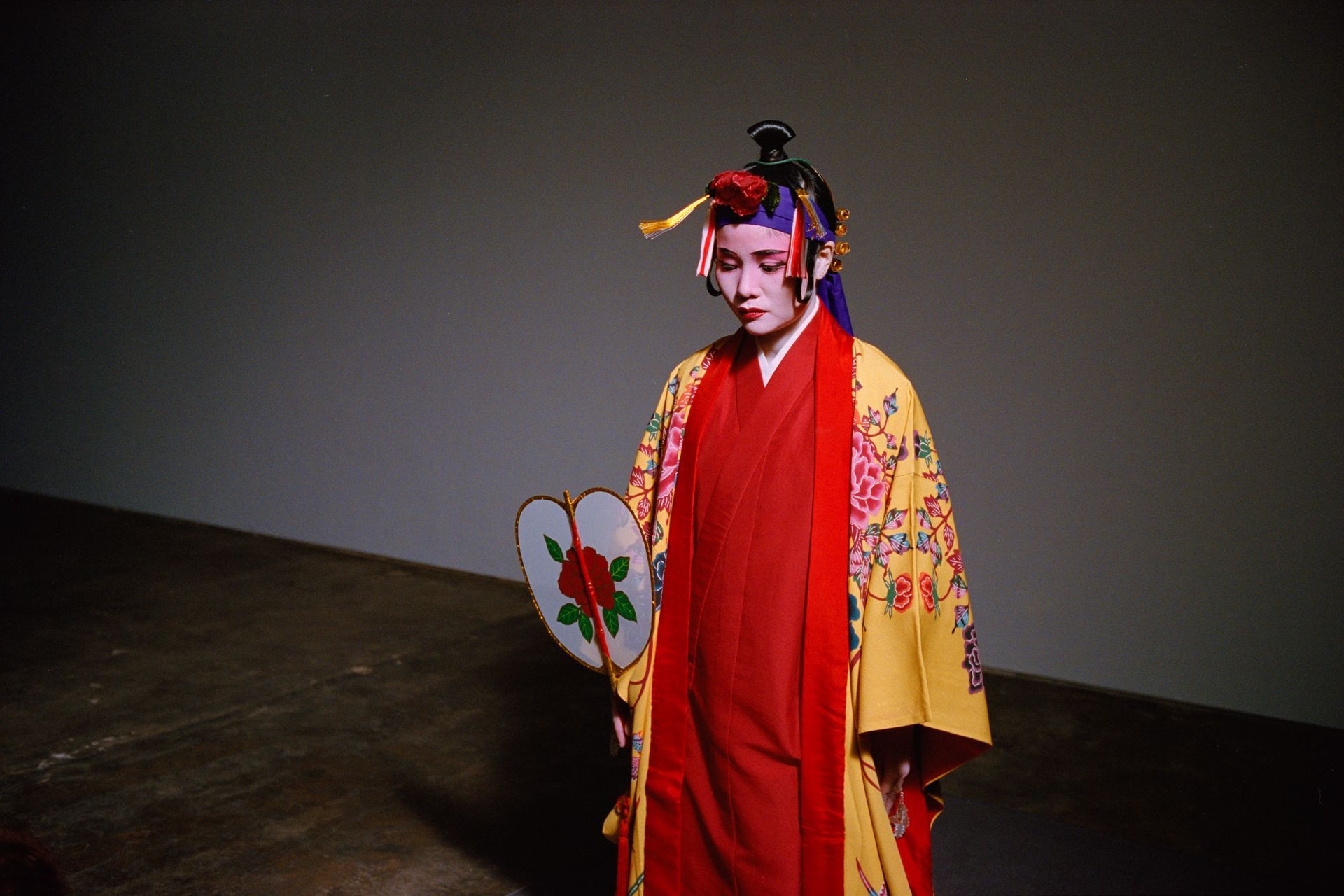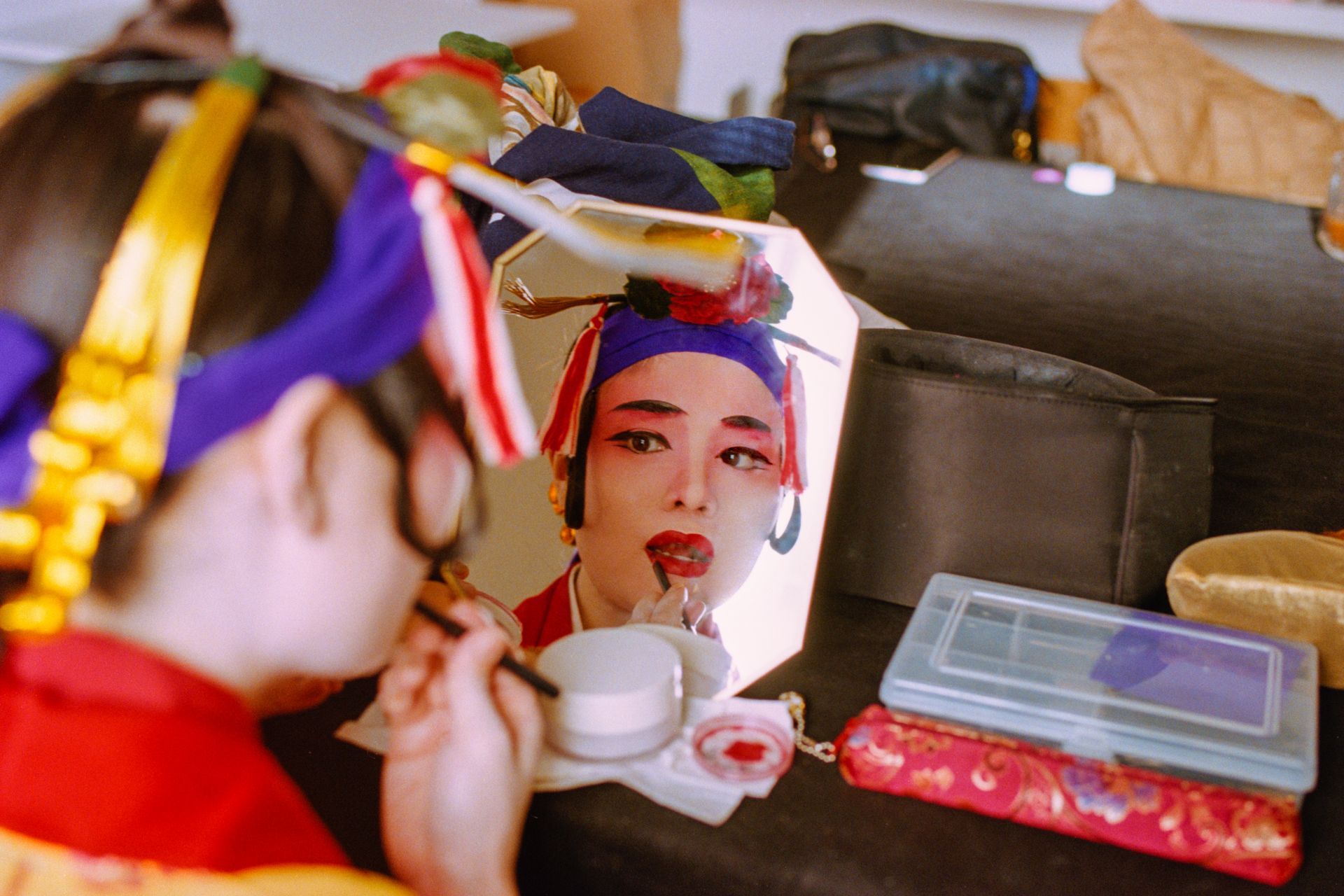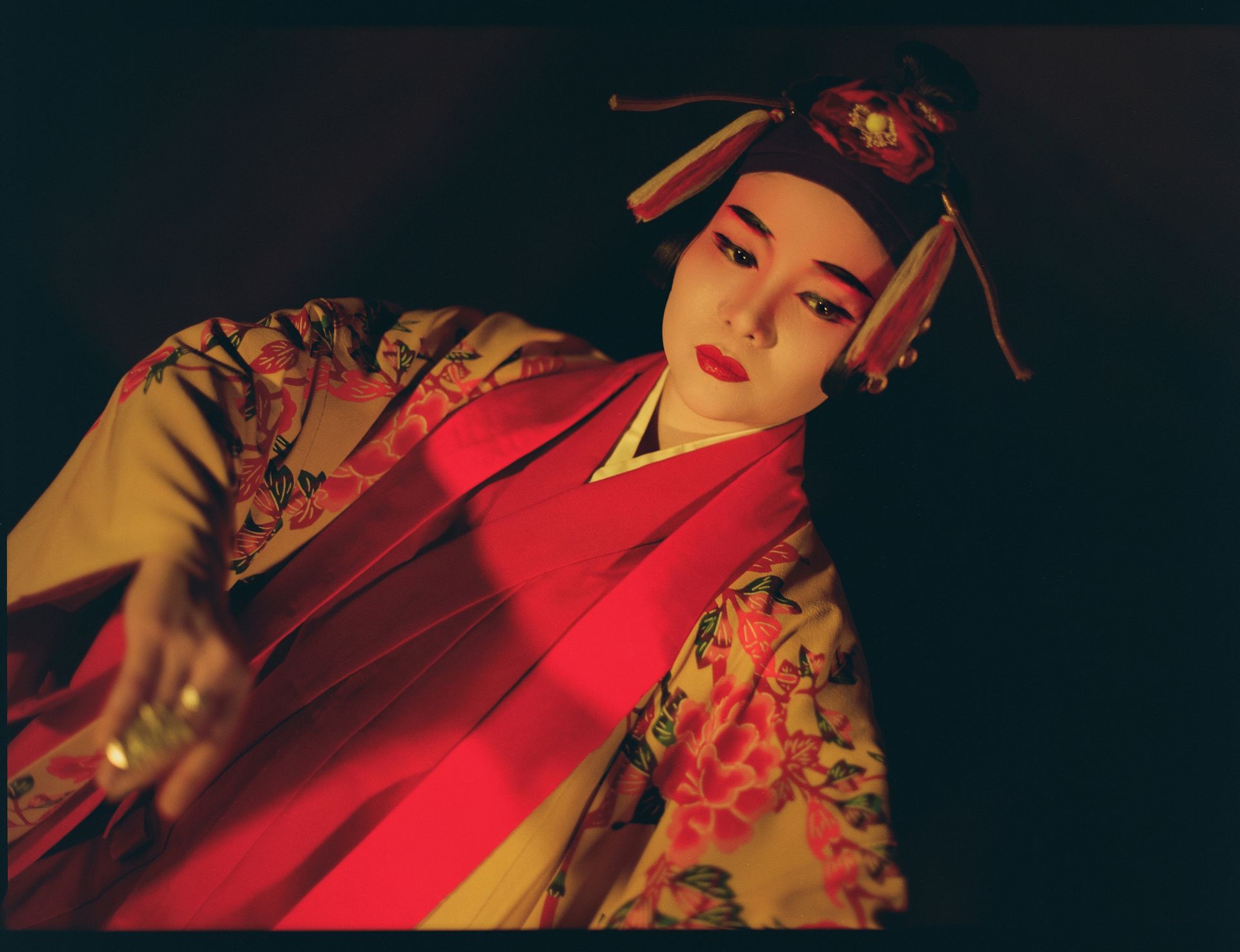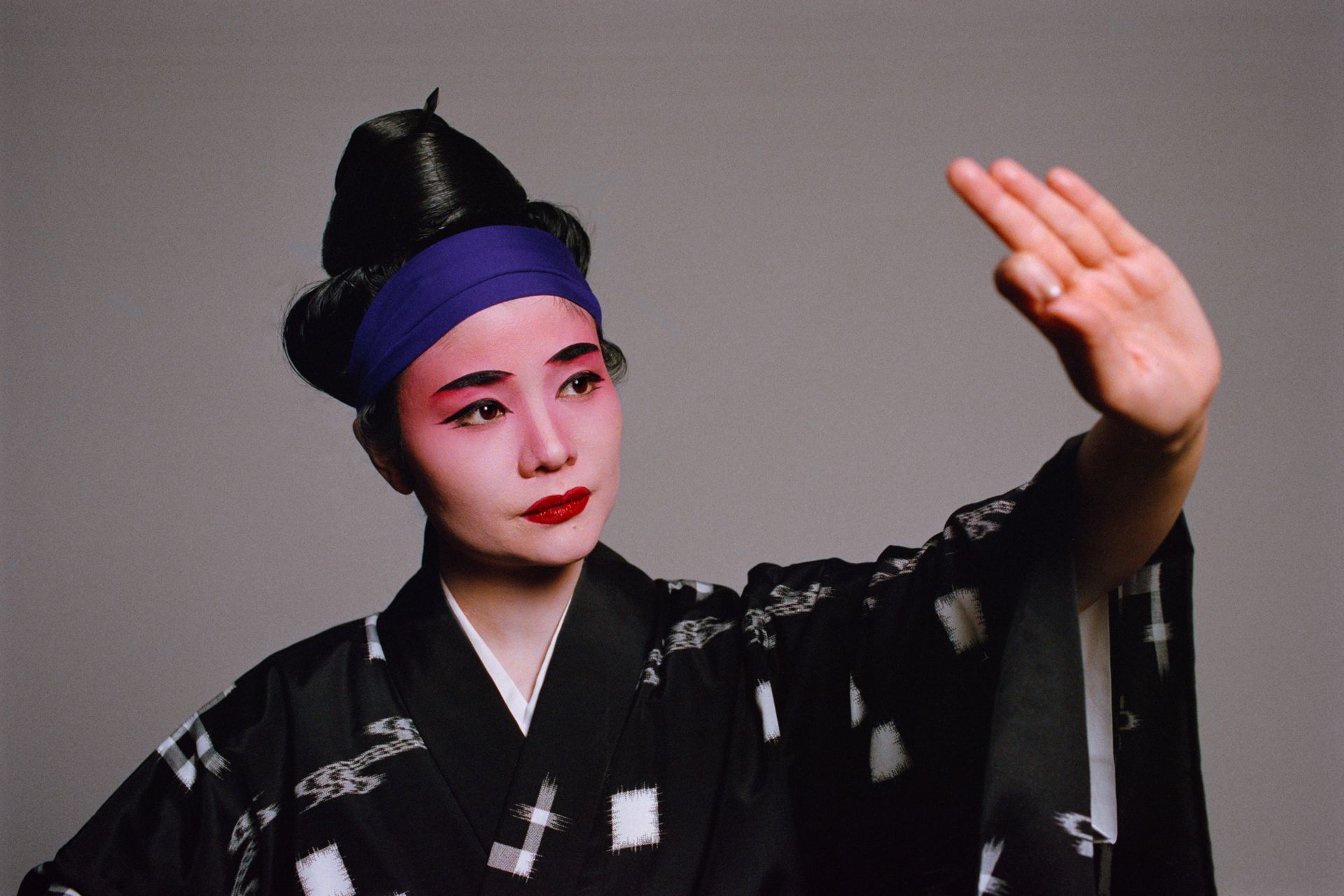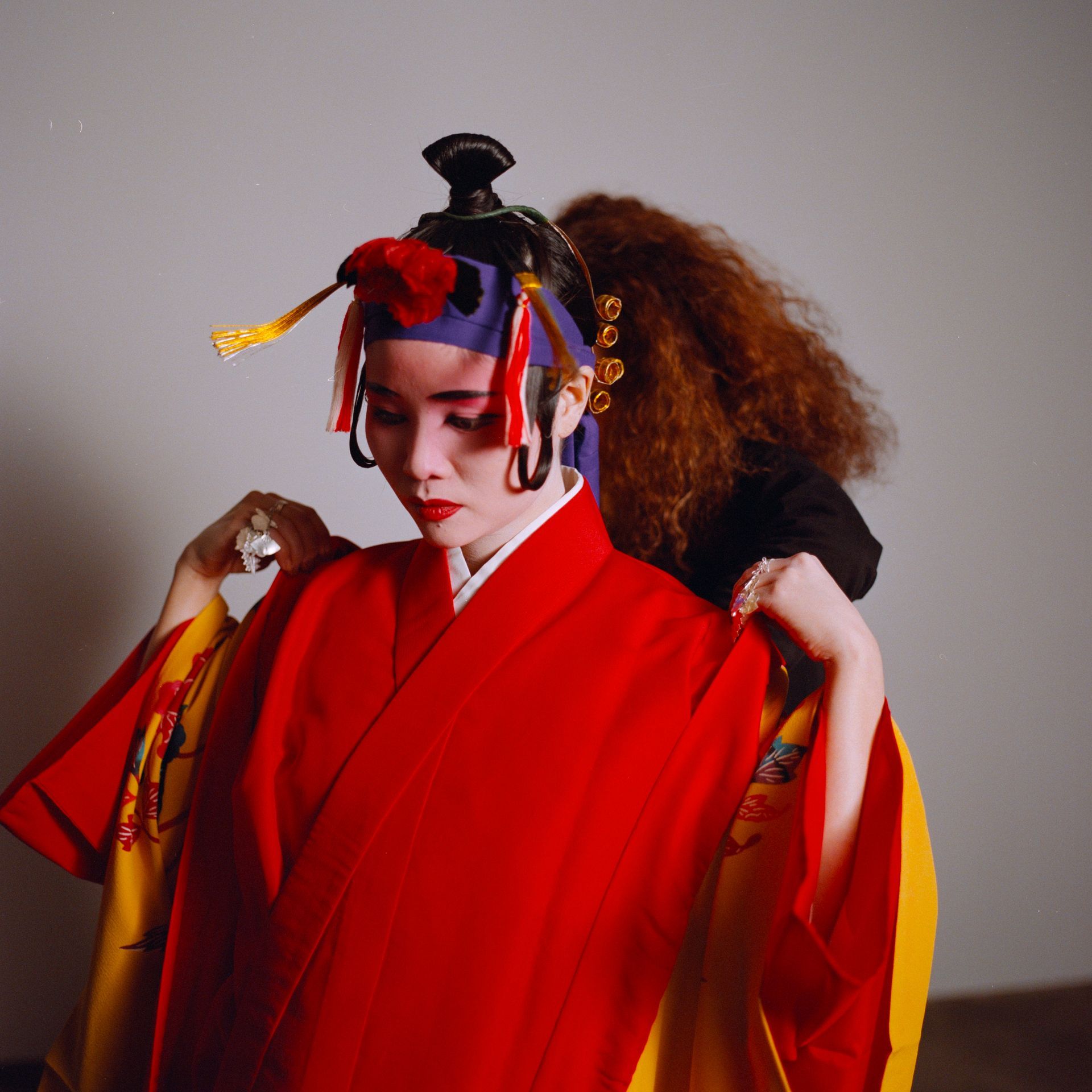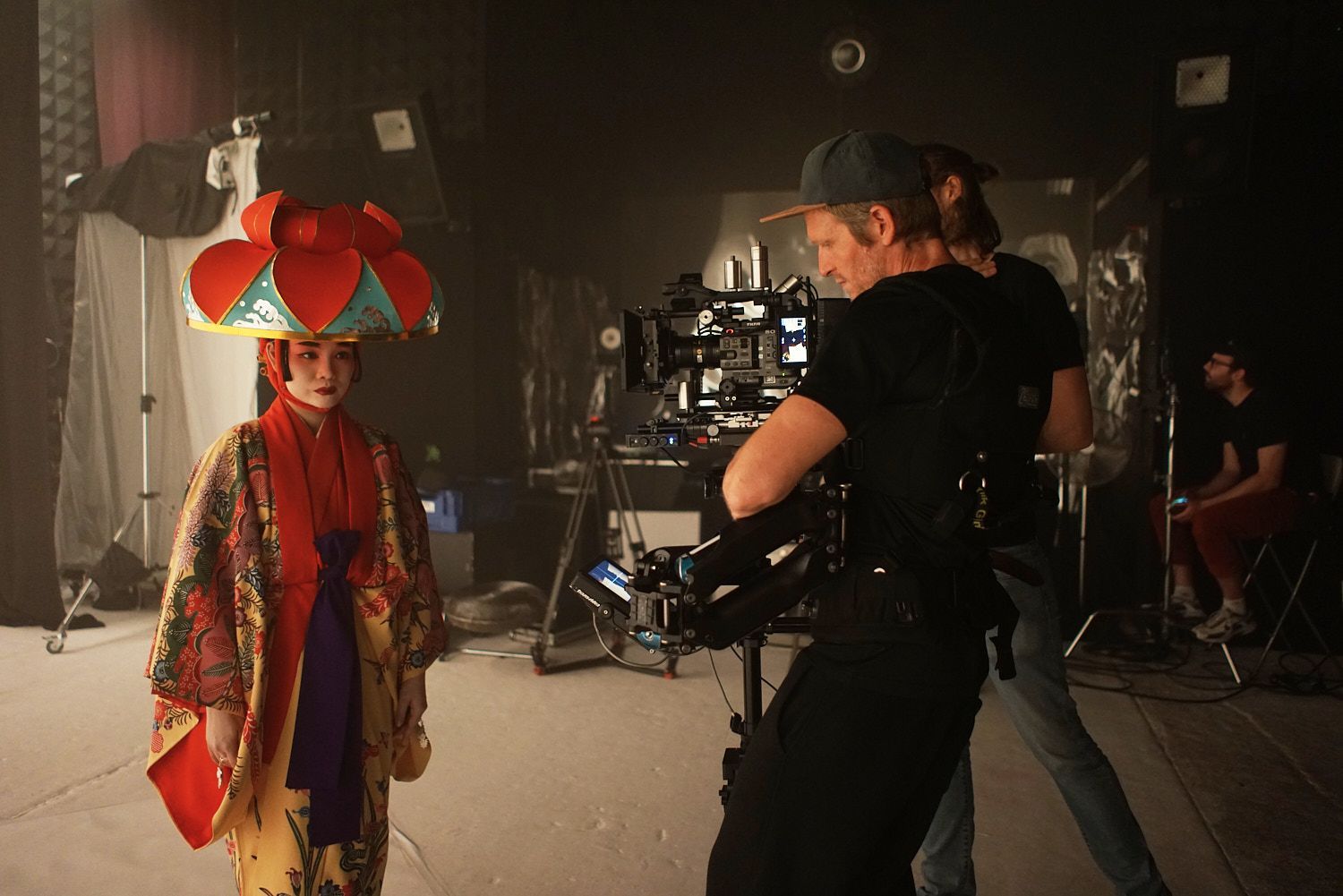By Riko Sugama
•
November 23, 2023
(日本語 下記) "In 2023, all performances at The Feuerle Collection museum ended yesterday. I would like to thank everyone who came to the performances. I would also like to express my gratitude to Désiré and Sara, the founders of the museum, Daniele, the museum director, and Shino, the coordinator, for providing us with this opportunity. Words cannot express how much I appreciate your support. The program began in March this year, and the March premiere was the result of many consultations with stage consultant Sonoko. We rehearsed repeatedly, conducting numerous general rehearsals as in the actual performance. After five performances, I am extremely relieved to have successfully completed the final performance. Here, I would like to share a few thoughts on my experience. First of all, I never imagined that performing solo on stage would be so intimidating. In Okinawa, I had a team and teachers to assist me, but here, I was on my own. The audience was so close that it felt like I could reach out and touch them, requiring me to be flawless in my makeup, hair, and attire. Just like the annual competition in Okinawa, everything had to be perfect, as if done by professional teachers. I was meticulous about every detail, from drawing each millimeter of my eyebrows to arranging every nail and hair strand. I also danced for about an hour in a space where the audience surrounded me 360 degrees, with no moment to catch my breath, being careful even not to sniffle, where every blink could draw the audience's attention. The first dance was "KAGIYADEFU," a celebratory dance, which I performed alone without any hairstylists, makeup artists, or dressers. Understanding the meaning and content of the dance was crucial for a successful performance. Normally, a man called 'PĒCHIN' chants the KŌJŌ, expressing gratitude for the wonderful day, and then dances the "KAGIYADEFU." However, in this performance, due to the composition, "KAGIYADEFU" was performed with a hair tie called 'kamuro.' I sang KŌJŌ in the "Kumi-odori" style on stage from the ages of 5 to 16, performing four works and eight acts in my childhood. I didn't expect to use those early experiences here and now, so I had to relearn the content and singing style. The "KAGIYADEFU," starting with the enchanting music of the hammered dulcimer, made me feel like I was in paradise. The Bingata Kimono is a precious piece, showcased only once a year in Okinawa. The costumes, so valuable that I borrowed them from my teacher, are used only in competitions and major performances. They are so exquisite that they are beyond my financial reach. I am thrilled that I could showcase this work in Berlin five times, as it is carefully preserved and not easily seen. I am also deeply grateful to my mother, also my teacher in Okinawa who entrusted me with such a valuable piece. During the second song, there was a costume change. I turned my back to the audience, switching into a 'KARAYA' costume and even changing the color of my tabi (socks), a transformation I had to perform in front of the audience. This idea was brilliant, and I truly believe it was a valuable experience for traditional dancers. We could never have conceived of such direction without Sonoko's guidance. Any stage performer knows the fear of even the slightest deviation in gaze, angle, or timing drastically altering the direction of a performance. Sonoko supported us perfectly. It is no exaggeration to say that this was a stage completed by matching her stage experience with the breathing and performance of me and Ayane. The second piece, "KARAYA," also accompanied by beautiful hammered dulcimer music, felt like dancing on clouds. The tea ceremony, performed by Lim Wang, followed. The tea served was "Tong Tian Xiang Phoenix Oolong," symbolizing a connection to paradise. Her gentle hand movements brought the beautiful steam and fragrance of the tea to the audience. Meanwhile, backstage, I changed my hairstyle from Kamuro to Onnakaraji style and my costume from Kinagashi to Ushin-chi style, a daring challenge! Quick costume changes are an important aspect of Japanese Kabuki, where each transformation involves five people. Usually, my teachers would handle my hair and costume changes, but this time I had to manage everything myself within just 8 minutes!! After the change, I began the Uta-sanshin performance with the challenging song “Saginjashi-Nakafu bushi,” a grand prix competition piece. This song was chosen because it differs from traditional Ryukyuan songs, typically sung in a 〔8886〕 pattern, being in a 〔75,55〕 pattern instead, Sang over Ryukyuan music, it is said to have originated around the time when Japanese (Yamato) culture was introduced. The song includes a verse called “Nakafu,” symbolizing the fusion of Yamato and Ryukyuan arts. It felt fitting to perform this piece in the museum, where Chinese, Japanese, and Ryukyuan cultures harmoniously blend. Inside the bunker, surrounded by thick concrete, the acoustics were such that even the slightest pitch error or Sanshin string mistake was unforgiving. The atmosphere was intense, and the audience's focus was palpable. Singing the first words felt as if I were bathed in divine sunlight, emerging from the darkness of a cave. After that, we transitioned into a contemporary improvisation movement using the Haori costume. This was freely danced to the sound of Ayane. In the next piece, “CHIJUYA,” the song's content is about a plover separated from its parents and loved ones, feeling lonely. However, I danced with a cheerful sense of gratitude towards the guests. We danced as if Ayane's tone emanated from our bodies, moving in unison with our breath. At the end of the performance, the lyrics of the Ryukyuan song 'KAGIYADEFU' were sung: 'What shall I compare this joyous day with? It's as if buds bathed in the morning dew are bursting into blossom.' I was overjoyed to conclude with these words. The performance encompassed everything from KŌJŌ, Ryu-Ka, Uta-Sanshin, traditional dance, Zo-udui, quick changes, to improvisation. I am eternally grateful to my mother and Sensei Yabiku for their enduring kindness and support. On stage, I always feel the presence of my ancestors when I perform. Recently, a close friend's grandfather passed away, so we invited our dear family onstage and danced as if performing for them. It was a profoundly peaceful and warm experience. I danced to celebrate and bless this joyous day, hoping and praying for happiness to come to everyone. Peace, Riko" 2023年、美術館での全公演が昨日終了いたしました。舞台に来てくださった皆皆様本当にありがとうございます。そして美術館創立者でキュレーターのDésiré 、館長Daniele、そしてコーディネーター志乃さんにこの機会をくださったことを深く感謝申し上げます。 昨日はなぜかハンマーダルシマー演奏の彩音さんも緊張しており、舞台直前まで内容確認をしていた前4回公演とは違い、2人ともそわそわして緊張状態のまま本番を迎えました。今年の3月に始まったこのプログラムはステージコンサルタントの苑子さんと一緒に相談に相談を重ね、リハーサルにリハーサルを重ね、何回も何回も本番通りのゲネラルプローべを重ねて迎えた3月のプレミアでした。それから5回公演、最後の舞台が無事終えることができて、ものすごくほっとしています。ここで私がこの公演で感じた事などを少し書きたいと思います。 まず、一人舞台がこんなに怖いものだと思ってませんでした笑。沖縄では助けてくれる後輩たちや先生たちがいる中での舞台であったこと、通常、観客と舞台は離れているもので、日本の舞台ではありえない舞台の設置、美術館のお力添えもありお客様がVIPばかり…そして、手を伸ばせば届く位の近さにお客様がいる事もあり、化粧、髪結い、着付け方法すべて、一切手を抜けません。沖縄で年に1度しか開催されないコンクールでプロの先生たちが手がけたようぬ完璧に仕上げなければなりません。眉を描く1ミリ、爪、髪の毛の1本まで意識しました。 また、360度お客様が見てることで、一瞬も息をつく瞬間がない、鼻をすすることさえ気を使うほどの音響空間、瞬き1つですらお客さんがじっと私を見つめる中約1時間を踊りました。まずは沖縄の舞台には欠かせない祝儀舞踊、「かぎやで風」。もちろん髪結師、化粧師、着付け師がいない中1人での舞台。踊りに込められた意味や内容をきちんと理解してないと構成した演目は務まりません。まず「かぎやで風」の前に口上を唱えました。通常ならば「ペーチン」と呼ばれる士族、男性が口上を唱え、喜ばしい日に感謝を述べてから「かぎやで風」を踊るものですが、今回の舞台では構成上、カムロと呼ばれる髪結での「かぎやで風」になります。そのため、組踊の女の唱えで口上を歌わせていただきました。5歳-16歳の時に舞台に立った「組踊」。4作品8演目を幼少期に勤めさせてもらったその時の経験が今ここで生きるとはあまりにも思っていなくて(焦)。苑子さんに口上を提案された時に内容や歌い方をもう一度勉強し直しました。改めて歌い方を勉強出来るいい機会になりました。そして、世にも素晴らしい音楽ハンマーダルシマーの演奏で始まるかぎやで風はあまりにも楽園にいるような、天国にいるような心地にさせてくれました。紅型も沖縄では年に1度しか出さない本当に貴重な作品で、先生からお借りしてコンクールや、かなり大きな舞台でしか使われないほど貴重な衣装です。何故なら私には手が出せないほど高級品です…。手入れも慎重で、なかなかお目にかかれない作品をベルリンでは5回もお披露目できたことをすごく嬉しく思います。また沖縄からこんな貴重な作品を私に託してくれた母、先生にもほんとに頭が上がりません。 2曲目に移る際、衣装のチェンジがありました。お客様に背を向けて中身の衣装を「瓦屋」の衣装にチェンジし、足袋の色まで変えると言う、お客様の前で見せる衣装替えでした。でも、このアイディアは素晴らしく、古典舞踊をやっている私たちでは発想できないような演出を苑子さんにやってもらったので、貴重な経験だったと心より思います。彼女のサポートあっての舞台でした。導線の確保、角度、タイミング、少しでもずれてたら演出が大きく変わる事を舞台人であれば誰でも恐れます。そこを彼女は完璧にサポートしてくれました。これは舞台に関わる彼女が培った経験と、私、彩音さんの呼吸を合わせて完成させた舞台だと言っても過言ではありません。彼女に、魅せる衣装替えの全サポートをしてもらい、心落ち着かせて踊る2曲目は同じくハンマーダルシマーの楽器で演奏される「瓦屋」。まるで雲の上にいる様な気持ちで踊りました。その後は琳王によるお茶の儀式、振舞われたお茶は「楽園に繋がる」という意味をもつ「通天香 Phoenix Oolong」彼女の穏やかな手の動きは湯気とお茶の香りをお客様に届けました。私はその間、楽屋にてカムロ髪型から女カラジと言う髪型に変更し、衣装も着流しと言う衣装からウシンチーと言う衣装に変えると言う無謀なチャレンジをしていました。いつもは先生方が髪を結ってくれて、衣装をチェンジして私は立ってるだけのことが多かった。もしくは絶対に後輩達が後ろを確認してくれたり、髪留めを取ってくれたり足袋を履かせてくれたりなど手伝ってくれますが、もちろんひとり。髪結、着付け、確認も全てひとり、それをを8分で行わなければなりません。幼い頃から髪結いや化粧衣装のチェンジを徹底的に教えてもらったからこそできる技術だなとほんとに実感しています。8分間の間でお水を飲む暇もなく、チェンジした後、歌三線演奏に入ります。1,5m先にお客様がいるという舞台で歌うのはグランプリの課題曲でもなる難曲、「下出仲風節」です。お客様の中には映画監督、ギャラリスト、オペラの作曲家など芸術のスペシャリストが多く、とにかく怖い笑。でももうやるしかない、「リコ!落ち着け!とりあえず歌ってしまえ!」みたいな気持ちで思い切って歌いました笑。なぜこの曲を選んだかと言うと、沖縄の古典客は全部〔8886〕で歌われますが、この曲は〔75,55〕で歌われています。そして曲は沖縄の演奏にのせて歌われるので、大和の文化が入ってきた頃にできたのではないかと言われる曲です。そこで大和の芸能と琉球の芸能をの「間」という意味で、仲風節と呼ばれている節があります。中国の文化、日本の文化、琉球の文化が平和的に融合されたこの美術館で演奏するにはぴったりの歌なんじゃないかと思いました。上下左右ともにとても分厚いコンクリートで囲まれたバンカーの中は、少しの音でも反響音がものすごく音程の間違いや三線の弦間違いは許されません。空気が張り詰め、お客さんの集中力も1番高まっているときに歌う第一声は洞窟の中から出て神々しく太陽を浴びたかのように気持ちがよかったです。その後は羽織の衣装を使った即興の舞踊に入っていきます。これは彩音さんの音に合わせて自由に踊らせていただきました。次の曲の浜千鳥では、曲の内容的には親元を離れて、愛しい人とも離れて寂しくチュンチュンなく、千鳥の姿を歌っていますが、ここでは来てくれたお客様に感謝の気持ちを込めて、明るい気持ちで踊らせていただきました。彩音さんの音色がまるで自分の体から音がなっている様な感覚になる程、2人の呼吸を合わせて踊りました。曲の最後には琉歌である「かぎやで風」の歌詞、「こんな喜ばしいこの日を何に例えましょう。まるで朝露雨を浴びた蕾がパッと花開くようだ。」を歌いました。この歌詞で終わらせられた事はとても嬉しかったです。 組踊の唱えから琉歌、歌三線に古典舞踊に雑踊、インプロと詰め込んだほぼ独演会。彩音さんと苑子さん、私で頑張った愛着のある舞台作品となりました。 また、ここまで親身に付き合ってくれたお母さん、屋比久先生に本当に感謝でいっぱいです。 私は毎回、舞台に上がるたびにおじいちゃんおばあちゃんを感じます。また、先日私の近い親友のおじいちゃんが亡くなったこともあり、私たちの家族を舞台に招待して、彼らの前でパフォーマンスしているような気持ちで舞台を勤めました。すごく穏やかで暖かな気持ちでした。この喜ばしい日を祝福して、祝福して、みんなに幸せが訪れるように祈って祈って踊らせていただきました。 心から、ありがとうございます。 11.2023 利好



